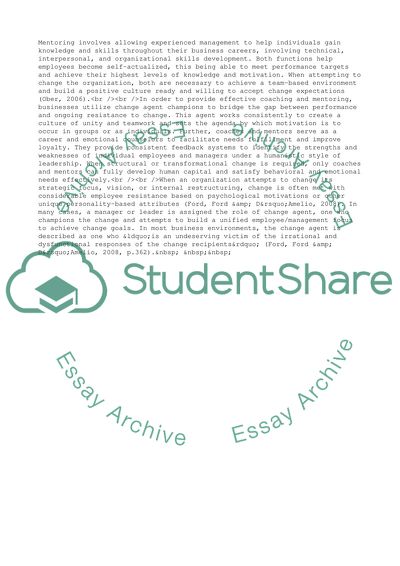Cite this document
(Coaching and Mentoring as a Tool for Organizational Change Coursework Example | Topics and Well Written Essays - 2000 words, n.d.)
Coaching and Mentoring as a Tool for Organizational Change Coursework Example | Topics and Well Written Essays - 2000 words. https://studentshare.org/management/1757580-coaching-and-mentoring-as-a-tool-for-organizational-change
Coaching and Mentoring as a Tool for Organizational Change Coursework Example | Topics and Well Written Essays - 2000 words. https://studentshare.org/management/1757580-coaching-and-mentoring-as-a-tool-for-organizational-change
(Coaching and Mentoring As a Tool for Organizational Change Coursework Example | Topics and Well Written Essays - 2000 Words)
Coaching and Mentoring As a Tool for Organizational Change Coursework Example | Topics and Well Written Essays - 2000 Words. https://studentshare.org/management/1757580-coaching-and-mentoring-as-a-tool-for-organizational-change.
Coaching and Mentoring As a Tool for Organizational Change Coursework Example | Topics and Well Written Essays - 2000 Words. https://studentshare.org/management/1757580-coaching-and-mentoring-as-a-tool-for-organizational-change.
“Coaching and Mentoring As a Tool for Organizational Change Coursework Example | Topics and Well Written Essays - 2000 Words”. https://studentshare.org/management/1757580-coaching-and-mentoring-as-a-tool-for-organizational-change.


